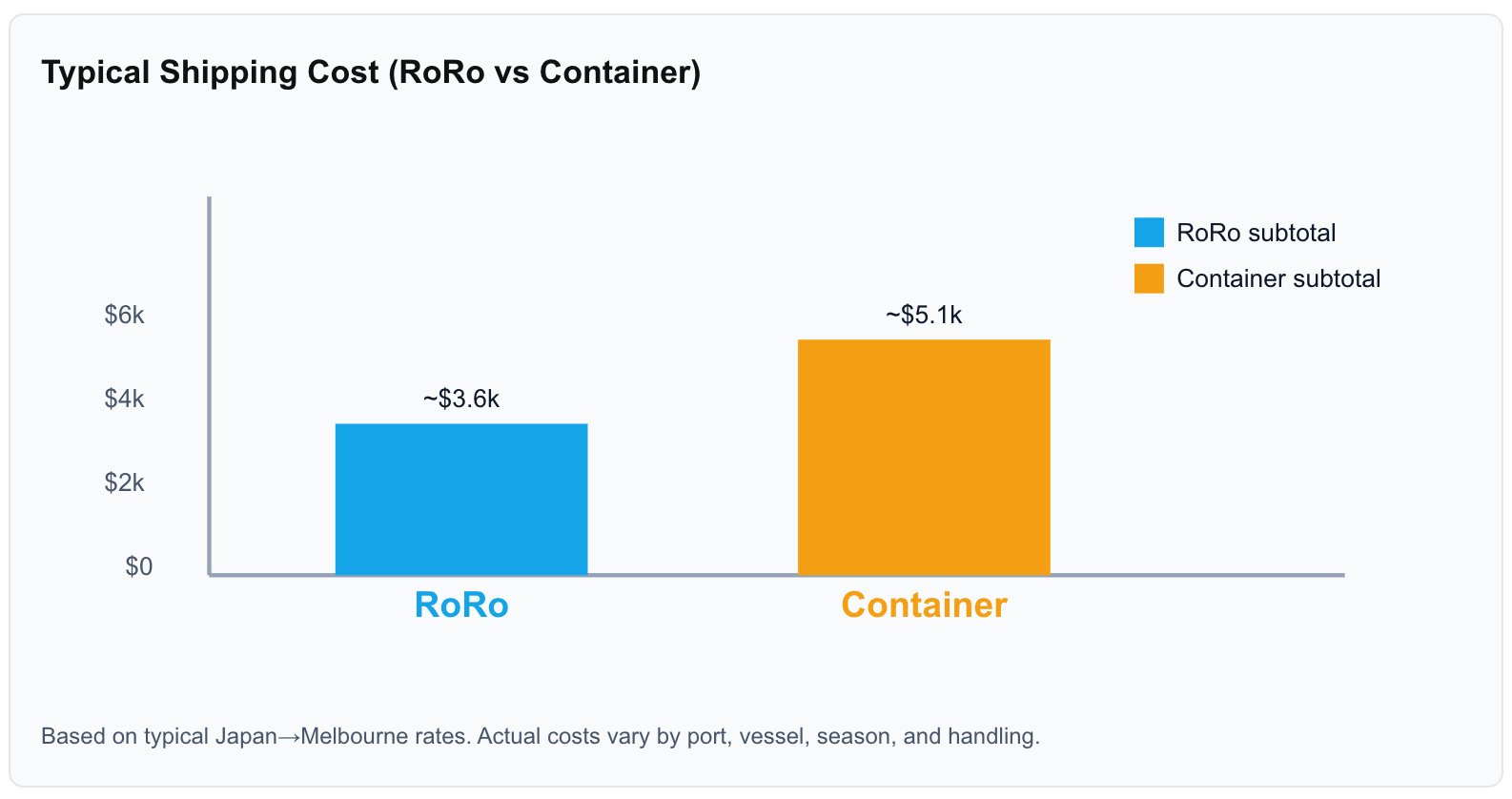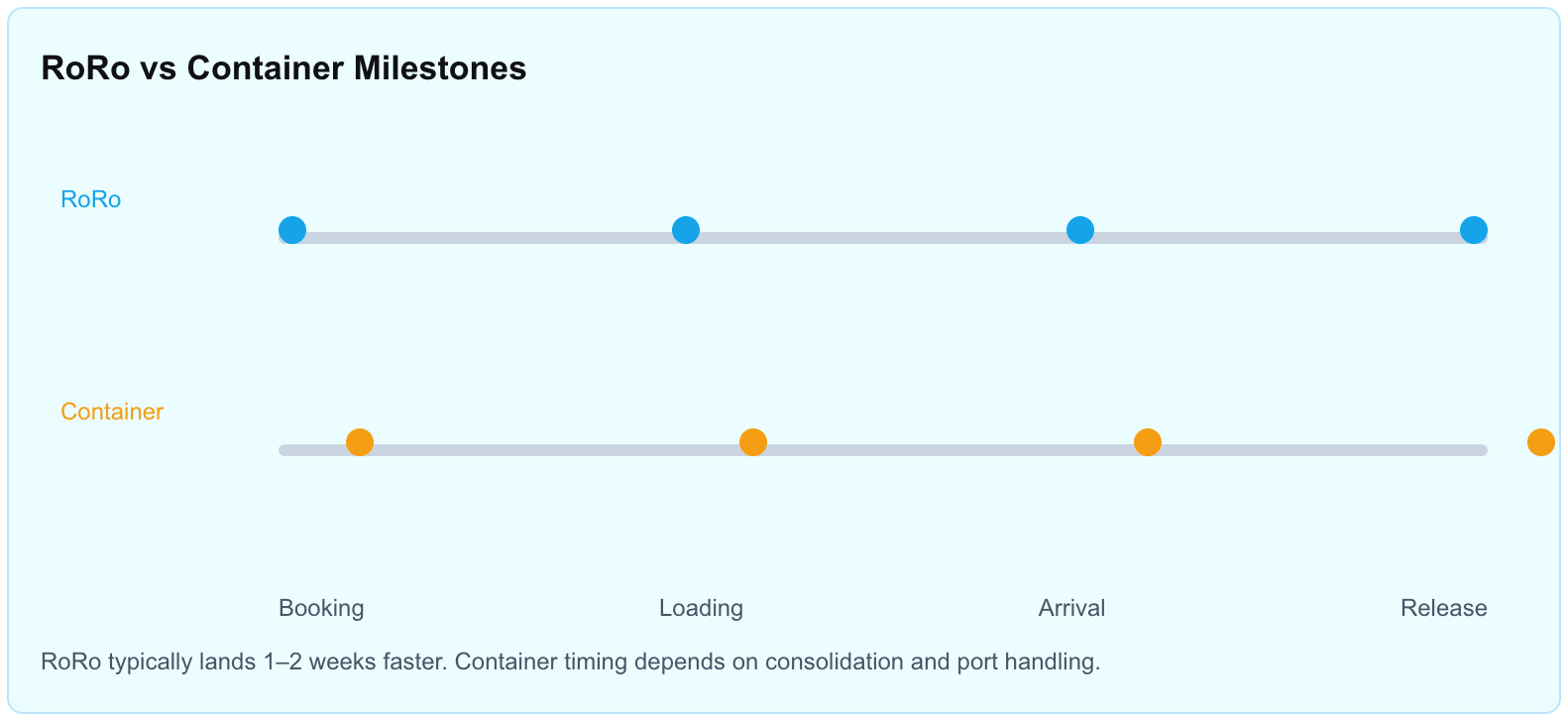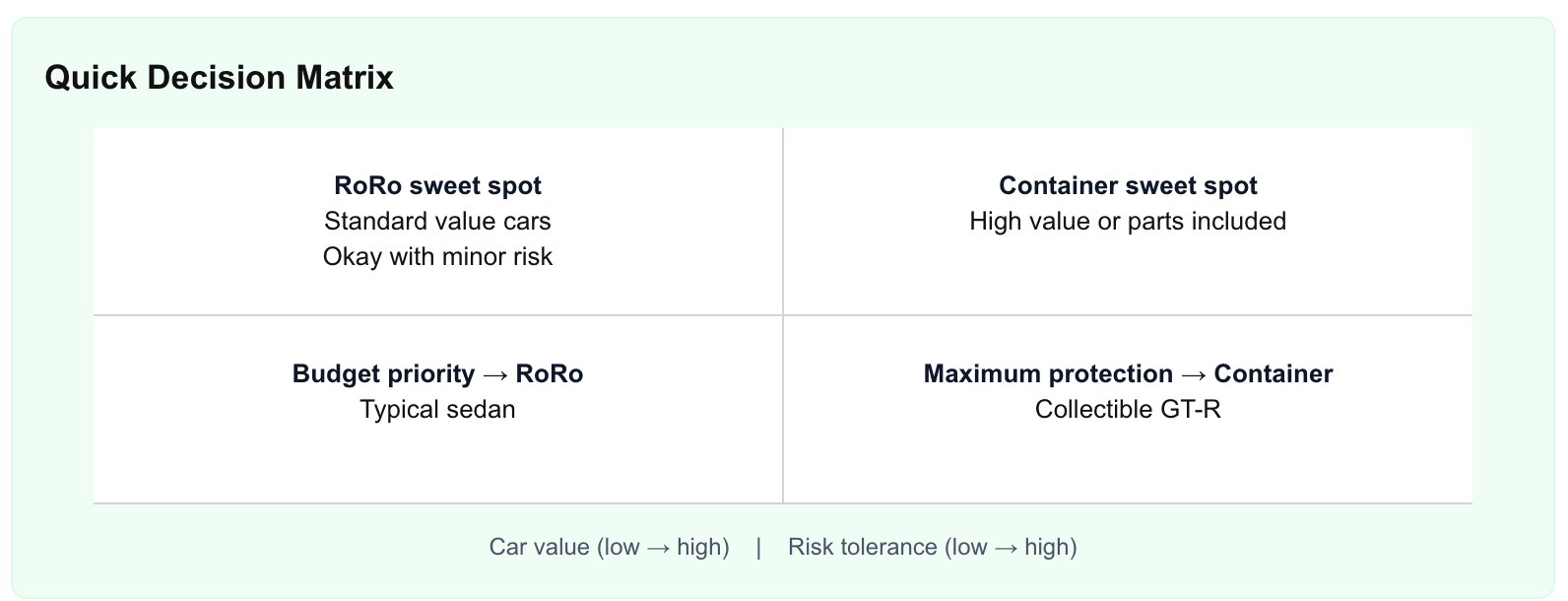RoRo vs Container Shipping – Which Is Best for Your Car Import?
When you import a car from Japan to Australia, you’ll choose between RoRo (Roll-on, Roll-off)
and container shipping. Both work. The right choice comes down to your car’s value, how cautious
you are, and your budget. Here’s a simple, honest breakdown.
What Is RoRo Shipping?
With RoRo, the car is driven onto the ship, secured in a vehicle deck, then rolled off at the port here.
It’s the workhorse of vehicle logistics: reliable, frequent, and usually cheaper.
- ✅ Usually lower cost than container
- ✅ Regular sailings from major Japanese ports
- ⚠️ Car sits in the ship’s car deck (no personal items allowed)
What Is Container Shipping?
The car is loaded into a 20ft or 40ft sealed container. It’s the premium option for protection
and for shipping parts or multiple vehicles together.
- ✅ Maximum protection during transit
- ✅ Can include spare parts or multiple cars (shared container)
- ⚠️ Typically 30–40% more expensive
- ⚠️ Lead times can be longer (consolidation/unloading)
Cost Comparison (Typical Mid-Size Sedan to Melbourne)
| Item | RoRo (AUD) | Container (AUD) |
|---|---|---|
| Ocean freight | 2,500–3,000 | 3,500–4,500 |
| Marine insurance | 150–250 | 200–300 |
| Wharf/handling | 300–400 | 400–500 |
| Quarantine clearance | 300–500 | 300–500 |
| Estimated shipping subtotal | 3,200–4,000 | 4,500–5,800 |
Regardless of method, you’ll need to pay Customs Duty GST on top of shipping costs.

RoRo vs Container — Side by Side
| Factor | RoRo | Container |
|---|---|---|
| Cost | Lower | 30–40% higher |
| Protection | Moderate | High |
| Sailing frequency | Weekly (most routes) | Less frequent / consolidation |
| Parts allowed in vehicle | No | Yes (in the container) |
Typical Timeline

Quick Decision Matrix

When to Choose RoRo
- Standard-value cars where budget matters most
- You don’t need to ship extra parts with the car
- You want the fastest, simplest route
High-value classics, such as those imported under the 25-Year Rule, are often best shipped in a container for maximum protection.
When to Choose Container
- High-value or collectible vehicles (GT-R, Supra, rare Euro)
- You want maximum protection or need to include parts
- You’re okay with a higher cost and possibly longer lead times
Why Import with Glam Groups?
- 22+ years handling both RoRo and container shipments
- Trusted exporters in Japan + compliant workshops in Australia
- Clear, transparent quotes before you choose a method
- 1,000+ cars imported safely and on time
Start Your Import Today
Still unsure which shipping method suits your car? Call (03) 9303 7252
or request a Free Shipping Quote below.
RoRo vs Container — FAQs
Which option is safer?
Container shipping offers the most protection. The car sits inside a sealed box, so it’s the safer pick for collectibles or high-value imports. RoRo is still widely used and reliable for standard cars.
How much more does container shipping cost?
As a rule of thumb, about 30–40% more than RoRo. On a typical Japan→Melbourne lane, expect roughly A$4.5k–5.8k total vs A$3.2k–4.0k for RoRo.
Can I put parts or personal items in the car?
Not with RoRo — vehicles must be empty. With containers, you can include parts (and even share a container), which is handy for builds and restorations.
Which is faster?
RoRo usually lands 1–2 weeks quicker. Containers can take longer due to consolidation and extra handling at each end.
Do I need marine insurance?
It’s optional but smart. Budget ~1–2% of the vehicle value. We can arrange insurance for either method.
